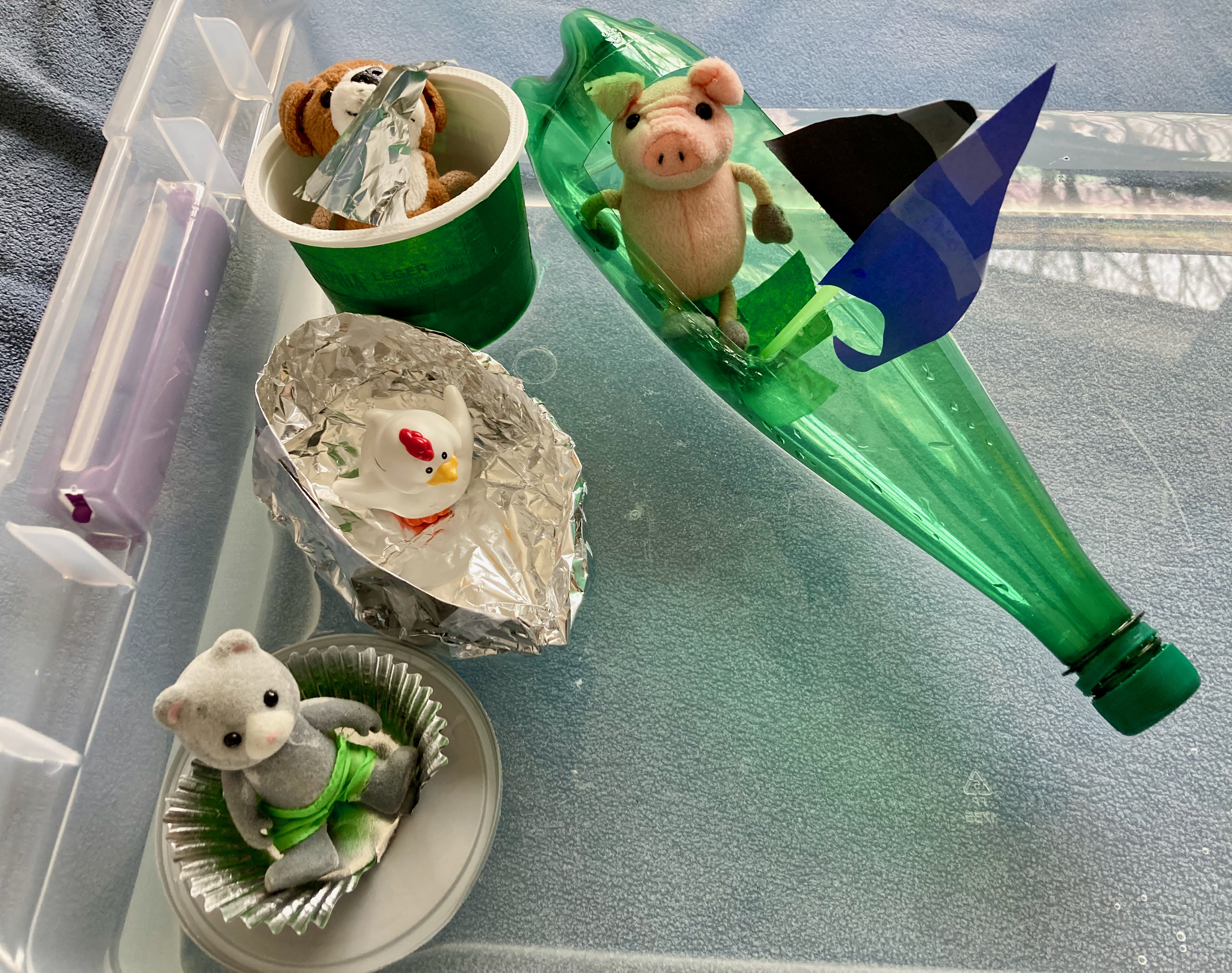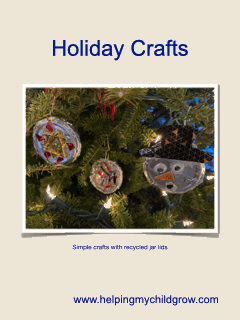A Boat that Floats?
Getting your kids to design, make and test their own boats keeps them busy and promotes the development of fine motor, creative and language skills, scientific understanding and problem solving.
What you need:
(This is just a suggested list of resources, you do not need everything on it. Add your own ideas.)
-
Recycled cardboard boxes of different sizes
-
Kitchen towel rolls
-
Corks
-
Plasticine
-
Recycled yogurt pots, cottage cheese pots and/or lids, plastic food trays and plastic bottles (Make sure that these are empty and have been washed out)
-
Greaseproof/wax paper
-
Aluminium foil/recycled clean aluminium foil dishes
-
Pencils/straws/short pieces of dowel etc.
-
Scissors
-
Materials for adding detail, like sails, to the boats; recycled wrapping paper, construction paper, bits of fabric, colouring pens, pencils, paints
-
Glue (Top tip: White craft glue dries clear)
-
Tape
-
A large plastic box, bowl or bucket half filled with water (or a paddling pool or bath tub)
Top tip: Place the box/bowl on a towel or wipeable, waterproof surface - things will get messy and wet!
What to do:
-
Investigate what happens to objects made of different materials when you put them into a large bowl/bucket half filled with water.
-
Collect together objects made of different materials; e.g. empty and clean plastic bottles, metal spoons, wooden spoons, bathtub toys, bottle tops, sponges, pencils, aluminium foil, apple, orange.
-
Choose an object and predict whether it will float or sink when you put it in a bucket/bowl of water.
-
Put the object in a bucket/bowl of water. Was your prediction right?
-
Think about why the object floated or sank.
-
Do you think it floated or sank because;
-
of the material the object was made from?
-
of the object's weight, size or shape?
-
of the force of the water (upthrust) pushing up on the object and the weight of the object?
-
the object contained air?
Top tip: When an object is in the water, two forces act on it. The weight pushes down on the water and the force of the water, known as the upthrust, pushes up on it.
An object floats if its weight is equal to, or less than, the upthrust.
An object sinks if its weight is greater than the upthrust.
-
Design a boat.
-
Make your boat from the materials that you have collected together.
-
Does your boat float? Put it in a bowl/bucket of water and test it out. Have fun!
Be a science detective
-
Can you think of a way to improve your boat Can you make it float for longer or move faster through the water?
-
Does your boat float better in deeper water, or, when the water covers a larger surface area?
-
Design and make some boats out of different materials. Float your boats in the water. How many marbles/coins/lego bricks etc. each boat will hold before it sinks?
-
Design and make some boats out of different materials. Float your boats in the water. Which boat stays afloat the longest? Why do you think that is?
-
Can you make your boat move faster? Design and make a boat with a propellor. Experiment with different ways of making a propellor out of lollipop sticks, elastic bands, plastic spoons, cardboard etc.
-
Set up an obstacle course in your container of water. Think about how can you steer your boat around the obstacles and test out your ideas.
Other posts you might like:


